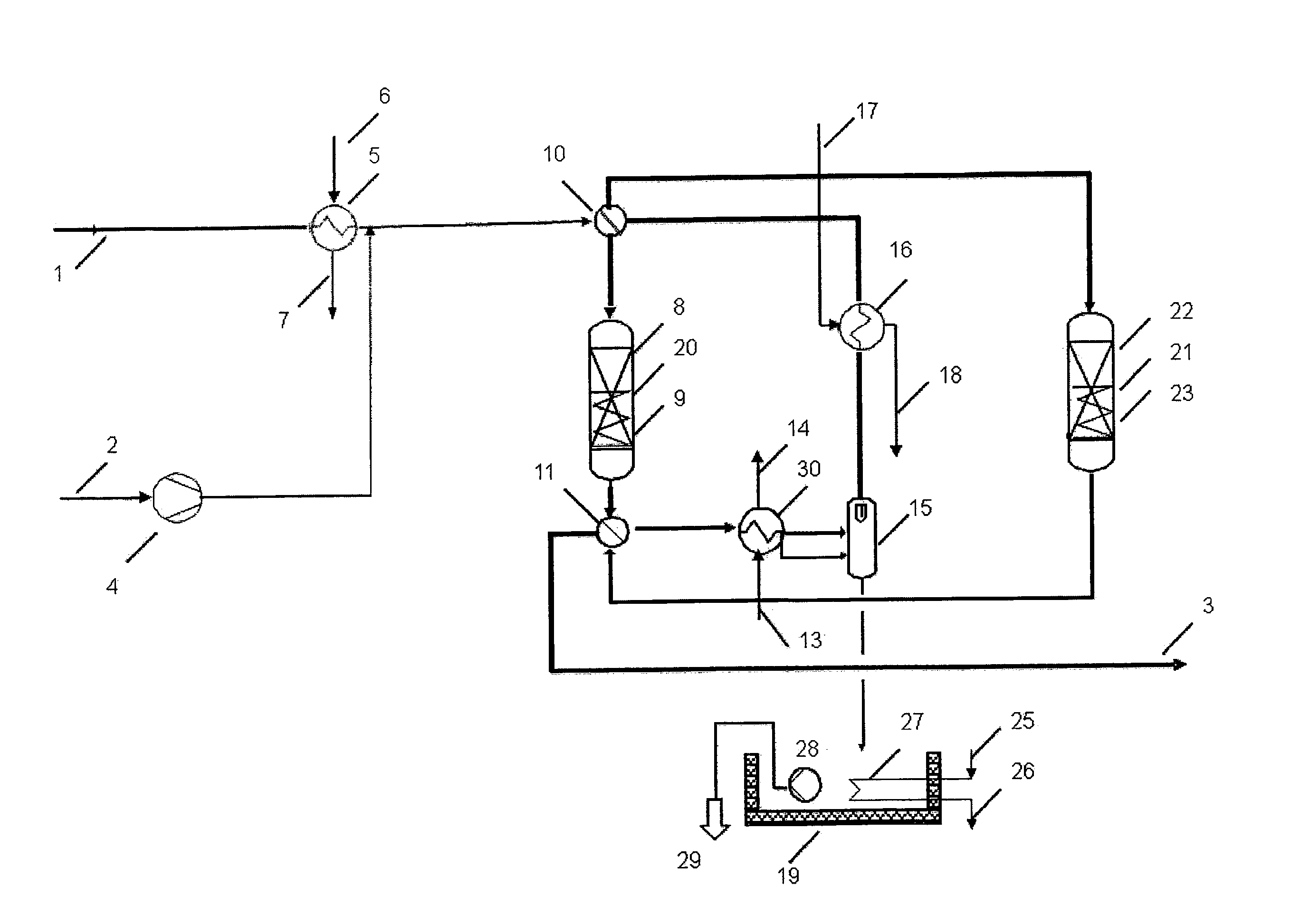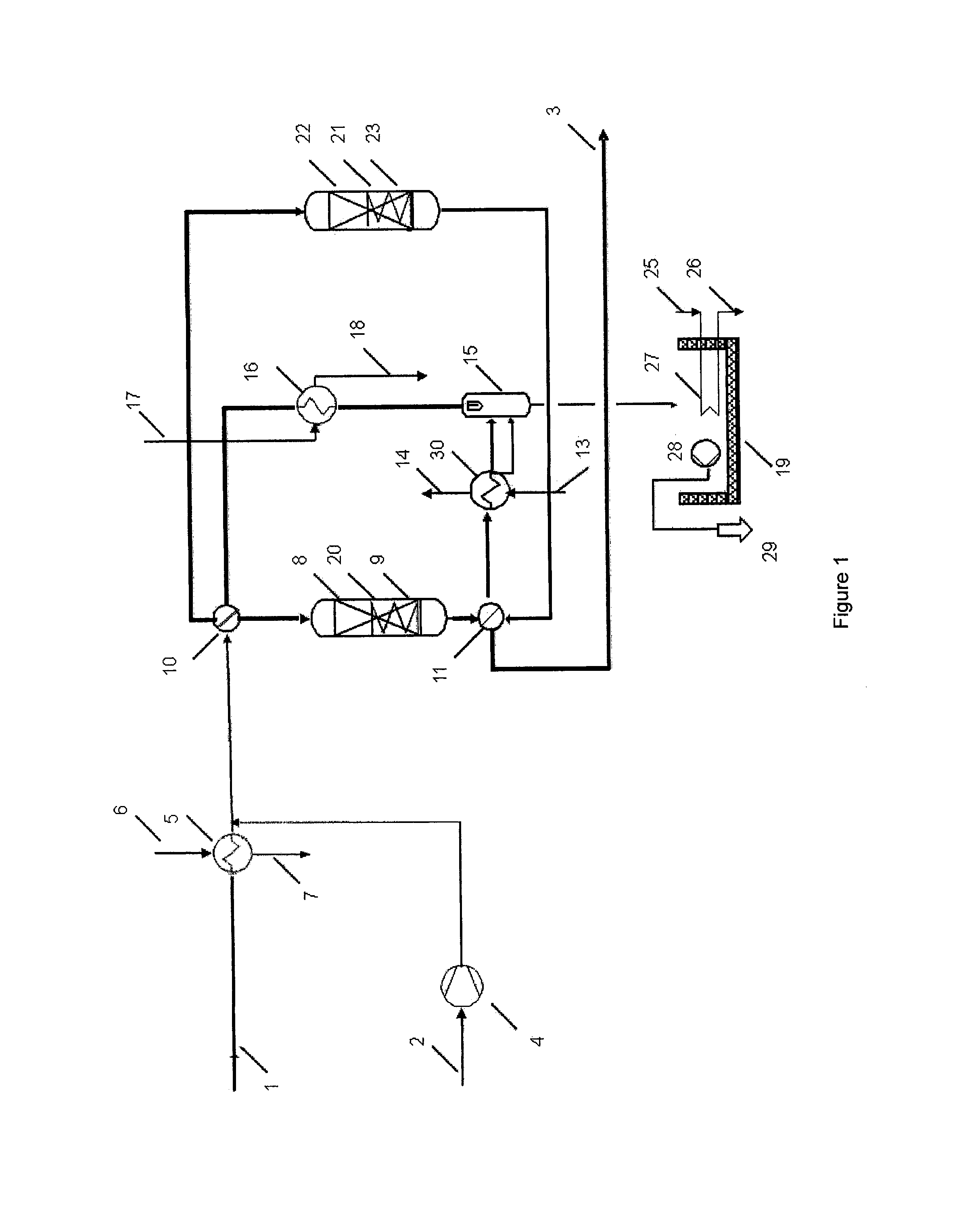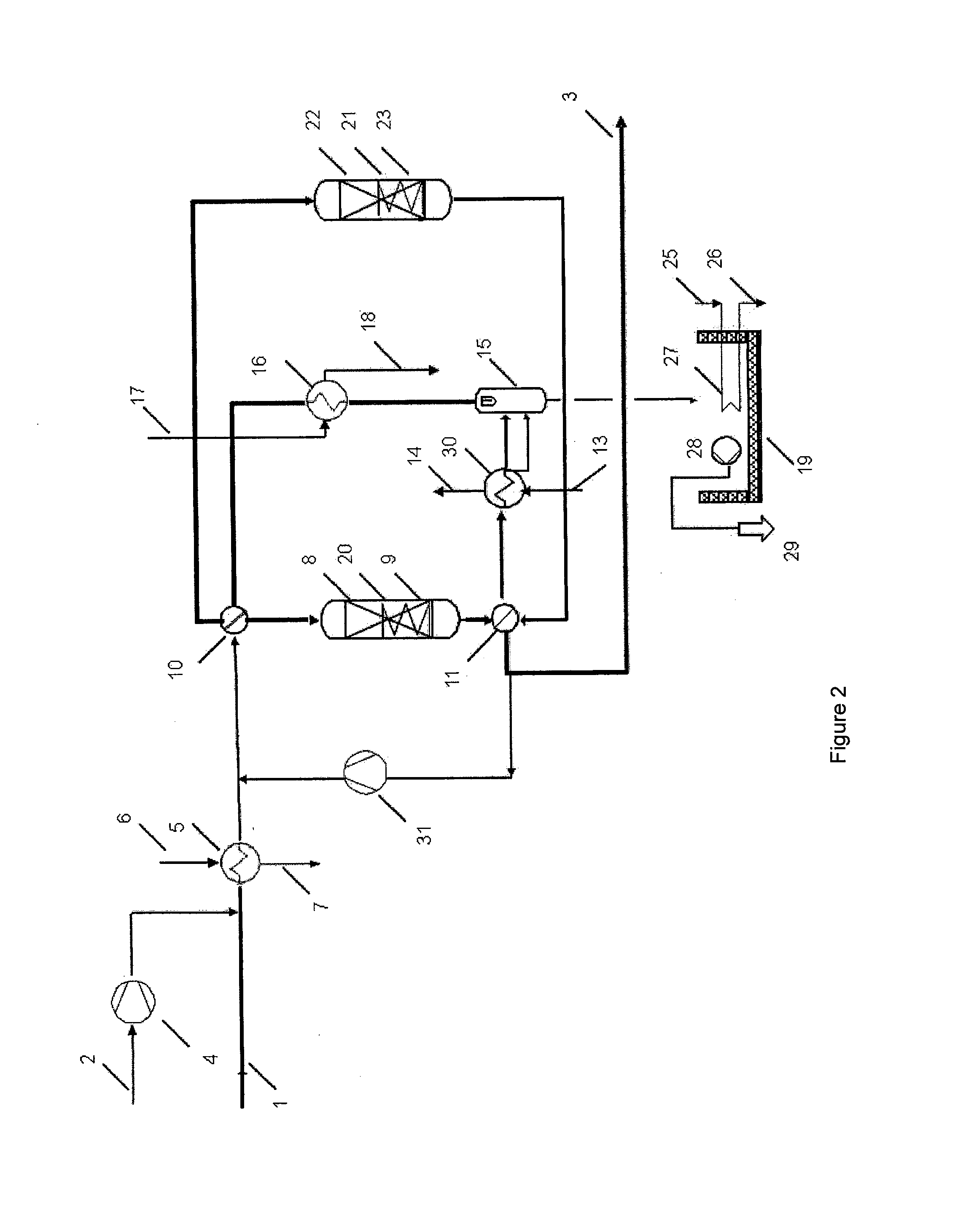Process for the Removal of Hydrogen Sulfide from a Gas Stream
a technology of hydrogen sulfide and gas stream, which is applied in the direction of hydrogen sulfide, gaseous fuels, separation processes, etc., can solve the problems of difficult manufacturing and high cost, clinsulf® do was considered inferior to other processes (economically) and claus process is not a suitable option
- Summary
- Abstract
- Description
- Claims
- Application Information
AI Technical Summary
Benefits of technology
Problems solved by technology
Method used
Image
Examples
Embodiment Construction
[0028]In this specification it is frequently referred to a “temperature in the first section” of a reactor or to a “temperature in the second section” of a reactor or a temperature that is kept at a certain value in a section of a reactor. It is to be understood that the gas entering a section of a reactor does not necessarily have the indicated temperature. Rather, the temperature in the first section of a reactor is defined as the temperature of the gas mixture leaving the first section of this reactor and the temperature in the second section of a reactor is defined as the temperature of the gas mixture leaving the second section of this reactor. The same applies if a certain temperature is “kept” in a section of a reactor. The temperature is usually taken immediately downstream from the corresponding section of the reactor and preferably as close as possible to the outlet of the section.
[0029]The inventor of the present invention found that a process that is similar to the Clins...
PUM
| Property | Measurement | Unit |
|---|---|---|
| Temperature | aaaaa | aaaaa |
| Temperature | aaaaa | aaaaa |
| Temperature | aaaaa | aaaaa |
Abstract
Description
Claims
Application Information
 Login to View More
Login to View More - R&D
- Intellectual Property
- Life Sciences
- Materials
- Tech Scout
- Unparalleled Data Quality
- Higher Quality Content
- 60% Fewer Hallucinations
Browse by: Latest US Patents, China's latest patents, Technical Efficacy Thesaurus, Application Domain, Technology Topic, Popular Technical Reports.
© 2025 PatSnap. All rights reserved.Legal|Privacy policy|Modern Slavery Act Transparency Statement|Sitemap|About US| Contact US: help@patsnap.com



